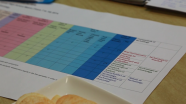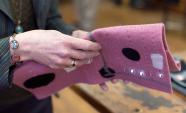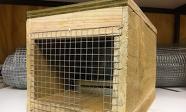Outcome development and evaluation
Outcome development and evaluation can be thought of as the design, production, and evaluative practices of the technological practice strand.
This component focuses on learning within three key stages:
- Design - the creative generation of design ideas that leads to the testing and refinement of these into a conceptual design for a potential outcome
- Production - the physical production and evaluation of the outcome prior to its acceptance for use in situ (where it was designed for). This is achieved through such things as research, experimentation, functional modelling, and prototyping.
- Evaluation - Analysis of evaluative data gained from functional modelling and prototyping, and the use of this to make informed and justifiable decisions for a potential and/or realised outcome, is critical to ensure that when the final outcome is produced, it is fit for purpose as defined by the brief.
Having an amazing idea is no use unless it can be communicated to others. This component supports students to develop effective presentation skills so they can collaborate with stakeholders when developing and sharing their conceptual ideas with others. Students progress in their capability to critically analyse their own ideas, and stakeholder feedback, as they strive to achieve their vision for their outcome.
Related resources
Indicators of progression
Indicators of progression
The indicators of progression describe the knowledge, skills, and understandings that students should be demonstrating in the Outcome development and evaluation component of the Technology learning area.
Indicators are provided for each level of the curriculum and are accompanied by guidance for teachers.
Video
Learning with the internet of things in years 9–10
In this video Julie McMahon and Mark Greenfield discuss electronic outcomes created by students.
Teaching snapshots
Muffin in a mug
Years 5–6 students created different muffins using the muffin in a mug method. They gathered data from modelling and used feedback to develop their outcomes.
Year 12 students manufacturing traps in support of Predator Free 2050
Students built traps and made modifications to the outcome based on feedback from stakeholders.
Student showcase
Top scholar technology 2017: Kapakapa buffalo milk
Year 13 student Hayley considered many aspects when developing her outcome including sustainability of resources, health and safety, and the ethical nature of testing practices.
Technology in the School Journal and Connected
"Whai (String games)", Ready to read, level 1, September 2018
This story is about traditional string games. Use this story to develop a simple game outcome.
Outcome development and evaluation: Key ideas (Word 2007, 140 KB)
Acknowledgment: This paper is derived from an earlier version by Dr Vicki Compton and Cliff Harwood.






